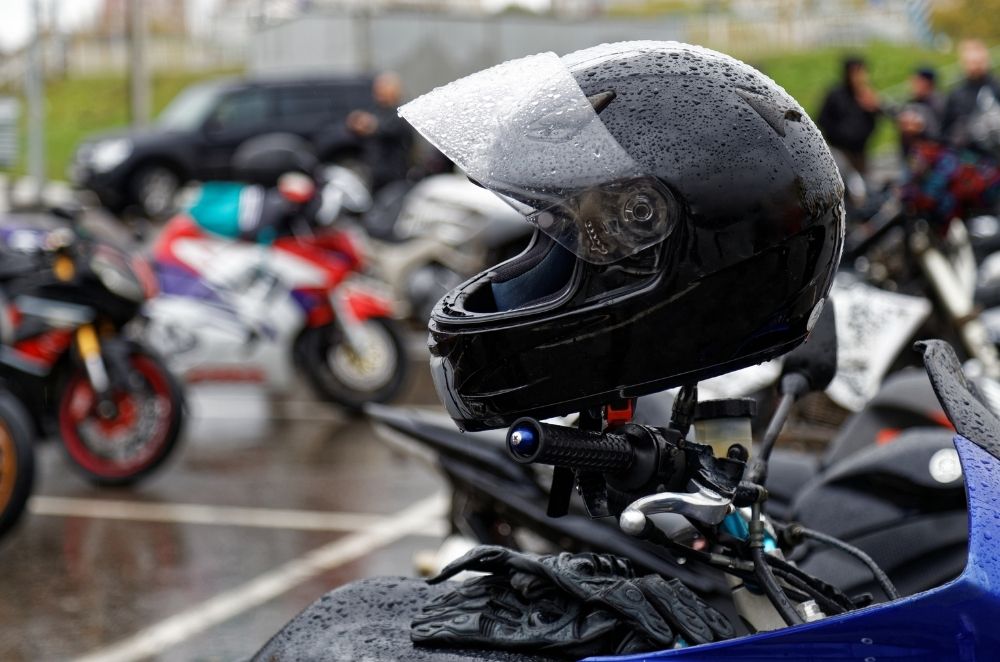
Everyone in South Carolina knows that if it isn’t raining, just wait 15 minutes! That’s because the weather here is famously unpredictable, often changing on a dime. So, while riders should avoid using their motorcycles during anticipated rain, that’s easier said than done. Unexpected rainstorms can catch bikers off guard, potentially leading to accidents.
Bikers who are injured in accidents already face an uphill battle. In fact, motorists often mistakenly fault motorcyclists for accidents, even when they are the victims. This makes safeguarding yourself against potential legal claims even more crucial. If you’ve been in a motorcycle wreck, talk to a South Carolina motorcycle crash attorney at Joye Law Firm. Our lawyers can help establish your innocence and secure compensation for your medical expenses and other losses.
Why Is Riding in the Rain So Dangerous?
Riding your motorcycle in the rain comes with several dangers. These are some of the major risks of driving in bad weather conditions.
Poor Visibility
Rainy weather reduces visibility for both you and other drivers. Rain can blur your motorcycle visor, and colder temperatures may cause it to fog up. Together, reduced visibility and slippery roads increase the risk of accidents.
To combat visibility problems, apply anti-fog treatments to your helmet or use visor inserts. Also, wear bright or reflective clothing to make it easier for other vehicles to spot you.
Slippery Roads
During rain, roads are slick and more dangerous for all vehicles. Since motorcycles have fewer contact points with the ground, they are at a higher risk of losing traction than cars.
A major risk for motorcycles is hydroplaning on slippery roads. Hydroplaning occurs when water gathers between the motorcycle’s tires and the road. This can cause your bike to lose grip, making it hard to steer or stop.
Hydroplaning greatly increases your crash risk, whether it’s you or another vehicle that is affected. One study found that 92% of high-incidence roads for hydroplaning are located in the southern part of the U.S., making it a major risk factor in South Carolina.
Legal Considerations for Riding in the Rain
Regardless of weather conditions, if another driver’s negligence caused your bike wreck, you may qualify for financial compensation. To secure compensation, you need to prove the following:
- The At-Fault Motorist Owed You the Duty Of Care: When driving on public roads, all drivers owe each other a duty of care. This means drivers must operate their vehicles lawfully and safely. In a motorcycle accident, all motorists must drive according to the same laws afforded to any other vehicle.
For instance, a motorcycle has the same right to an entire lane as any other vehicle. Drivers exercising proper care should not infringe upon the lane of a motorcyclist.
- The At-Fault Driver Did Not Fulfill Their Duty of Care: If a motorist causes an accident because they failed to fulfill their duty of care, you may be due compensation. Examples of duty of care breaches include driving under the influence and speeding.
Even driving at or below the speed limit can still be considered speeding if it is too fast for the road conditions, according to South Carolina law. If you are partially at fault for the crash, you may still receive compensation from the other party if you are less than 51% responsible.
- The At-Fault Driver’s Negligence Caused You Harm: The final step in proving you are due compensation is showing that the other driver’s actions caused you economic and non-economic harm. Economic harm can include medical bills, lost wages, or other expenses related to the accident. Non-economic harm is the pain, suffering, and emotional anguish caused by the accident.
Essential Gear for Riding in the Rain
To improve your safety while riding in the rain, wear weather-appropriate gear. This includes:
- Helmet: Always wear a helmet, regardless of the weather conditions. While South Carolina only requires a helmet for riders under 21, wearing one can protect you from serious injury or death if you’re involved in a crash.
- Waterproof Clothing: Waterproof jackets, pants, and suits are designed to keep you dry and comfortable in wet weather. These garments are typically made from water-repellent materials, like Cordura (a type of nylon). These fabrics prevent moisture from soaking through your clothes.
- Anti-Fog Helmet Visor: An anti-fog visor can improve visibility in rainy conditions. It prevents your visor from fogging up due to the humidity and temperature differences. This ensures that you’ll be able to see, even during a downpour.
- Non-Slip Gloves: Wet conditions can make it harder to grip the motorcycle’s handlebars. Non-slip gloves, like those made from polyester-goat leather blends, can provide a better grip in wet weather. They can help you control and operate your bike safely.
Motorcycle Maintenance for Wet Conditions
Regular motorcycle maintenance can help ensure safety and optimal performance in wet weather conditions. Key maintenance tasks include:
- Tire Tread Depth: Ensure your tires have a minimum tread depth of 2/32-inch for adequate grip on wet roads. You can periodically check by using a tread depth gauge or the built-in wear indicators on the tire.
- Brake Inspection: Examine brake pads for wear, and make sure there’s no moisture or debris on the discs. Use a flashlight for better visibility. Be sure to check that your brake fluid level is within the recommended range.
- Headlight Function: Confirm that headlights are bright and properly aligned for optimal visibility in rain. Clean the lens, and adjust the beam if necessary. Use your motorcycle’s manual for guidance.
Safe Riding Techniques in Wet Weather
You can use specific riding techniques to give yourself more control in wet weather. Consider the following tips for how to maneuver your motorcycle in the rain safely:
- Smooth Operation: Use gentle adjustments on the throttle, and apply brakes well in advance. This helps maintain control on slippery surfaces. Avoid abrupt changes since they can lead to loss of traction and potential skids.
- Seek Dry Lines: Drive through the driest sections of the road whenever possible. These areas provide better grip than wet patches, improving motorcycle stability and safety during rainy rides.
- Cornering Caution: Approach turns with reduced speed, and avoid sharp maneuvers. In wet conditions, lean your body instead of the motorcycle to improve stability. This can help reduce the chances of slipping on slick surfaces.
- Speed Control: Maintain a moderate and steady pace. In wet weather, the stopping distance increases. Lower speeds give you more time to react to unforeseen obstacles or changes in road conditions.
- Early Rain Caution: Exercise increased caution within the first hour of rainfall when rain mixes with oil and dirt on the roadway, creating a hazardous environment. If possible, wait out the rainstorm before resuming your journey.
If you can’t avoid the storm, pull over to slip on appropriate gear. This should include a waterproof jacket and gloves. It is easier to operate your motorcycle safely when you are dry and warm.
Don’t Let Weather Stop You from Getting Compensation
While rainy conditions pose risks for all drivers, bikers need to be extra vigilant. It is essential to ride smoothly, maintain your visibility, and be extra attentive when you need to ride in bad weather.
Unfortunately, you may do all of this and still get in a crash caused by another motorist’s negligent driving. If this happens to you, contact an experienced attorney immediately.
The motorcycle crash attorneys at Joye Law Firm can fight for the financial and emotional compensation you deserve. Contact us today for more information and a no-obligation, free case consultation.
Originally published March 21, 2022. Updated April 1, 2024.


































